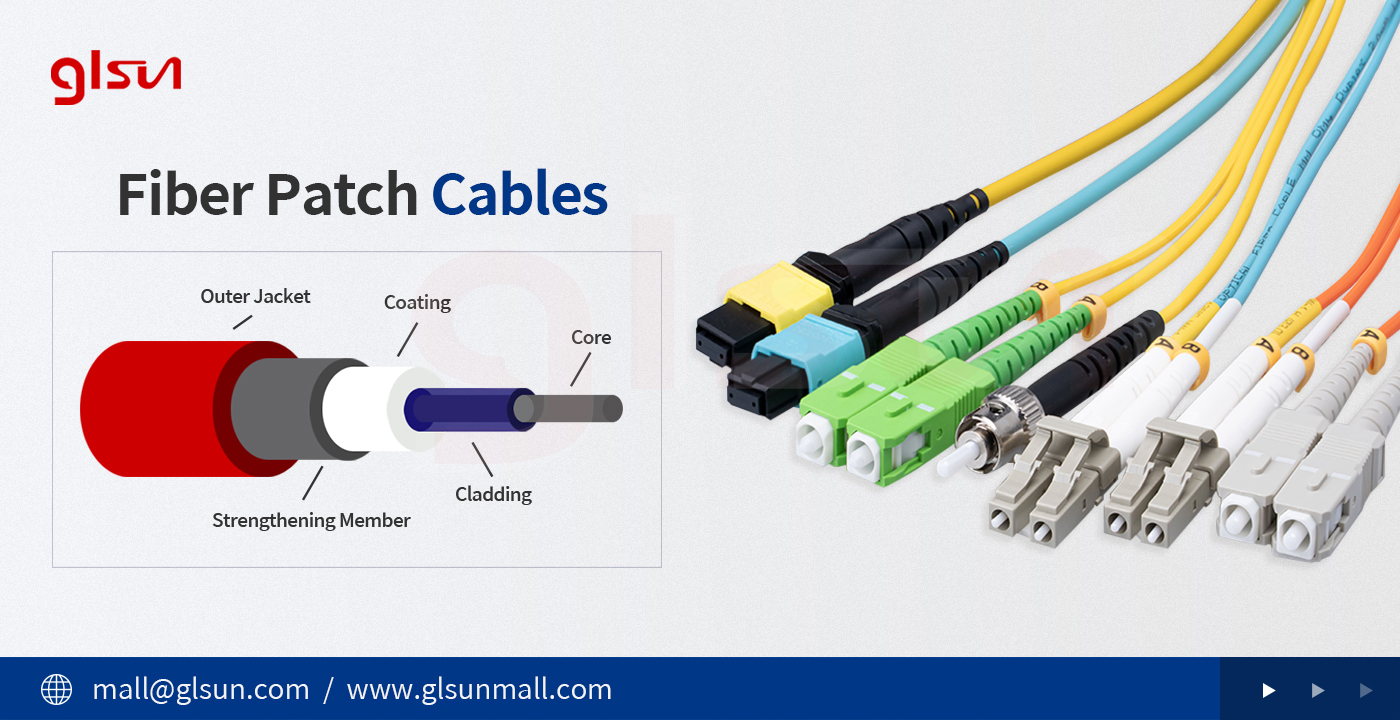Fiber Optic Tech
Types of Fiber Patch Cables and Tips for Use
Types of Fiber Patch Cables
Optical fiber patch cables can be divided into single-mode and multi-mode silicon-based optical fibers, and other plastic patch cables according to different transmission medium.
According to the connector structure, it can be divided into FC, SC, ST, LC, MTRJ, MU, SMA, FDDI, E2000, DIN4, D4 patch cables and other forms. The common optical fiber patch cables can also be divided into FC-FC, FC-SC, FC-LC, FC-ST, SC-SC, SC-ST, etc.
Single-Mode Fiber: Generally, the color of fiber cable is yellow, the connector and protective sleeve are blue. Its transmission distance is long.
Multi-mode fiber: Generally, the color of fiber cable is orange, and some is gray, and connectors and protective sleeves are in beige or black. The transmission distance is short.
Tips for Use
The receiving and transmitting wavelengths of optical transceiver modules at both ends of the fiber patch cord must be the same, that is to say, both ends of the fiber must be optical transceiver modules with the same wavelength.The simple way to distinguish is that the color of optical transceiver modules should be consistent.
In general, the short-wave transceiver module uses multimode optical fiber (orange fiber), and the long-wave transceiver module uses single-mode optical fiber (yellow fiber) to ensure the accuracy of data transmission.
Do not bend and wrap the optical fiber excessively in use, which will increase the attenuation in the transmission process.
After using the optical fiber patch cables, the connector must be protected with a protective sleeve. Dust and oil will damage the coupling of the optical fiber. If the connector is dirty, it can be cleaned with alcohol, otherwise the communication quality will be affected.
1. Before use, the ceramic ferrule and end face must be wiped clean with alcohol and absorbent cotton.
2. The minimum bending radius of the fiber should be less than 30mm.
3. Protect the ferrule and its end face to prevent bruising and pollution, and put on the dust cap in time after disassembly.
4. Do not look directly at the fiber end face during laser signal transmission.
5. In case of man-made and other irresistible factors damage, the damaged fiber optic cable should be replaced in time.
6. Read the instructions carefully before installation, and carry out installation and commissioning under the guidance of the manufacturer.
7. If there are abnormalities in the optical fiber network or system, the troubleshooting method can be used to test one by one. When testing or removing patch cord faults, you can do the on-off test first. Usually, you can use a visible laser pointer to illuminate the entire optical fiber link. Or use a precision optical fiber insertion loss and return loss tester to test its various indicators. If the indicators are within the acceptable range, the jumper indicator is in normal, otherwise it is unqualified.




















